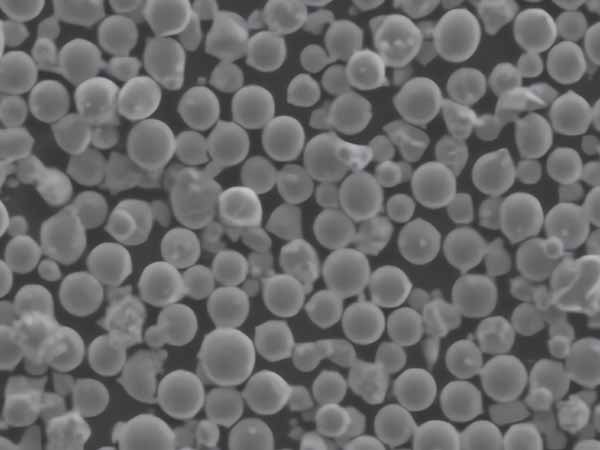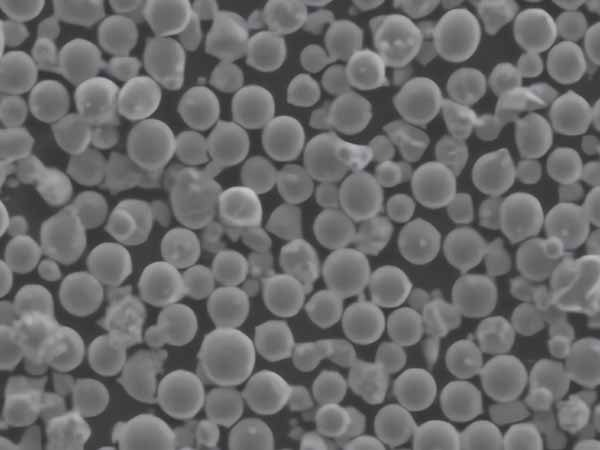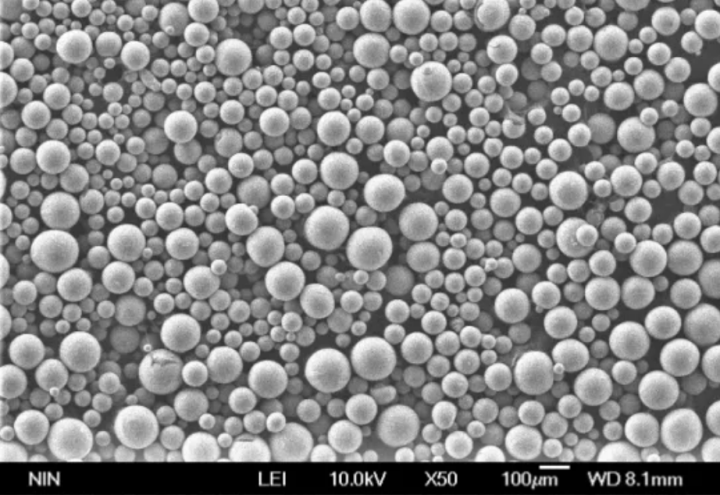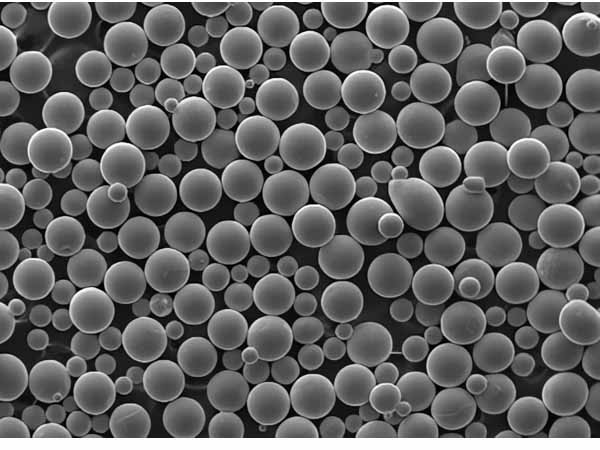Abriebfestes Pulver ist ein unverzichtbares Material in Industrien, in denen Maschinen und Komponenten rauen Umgebungen und ständiger Reibung ausgesetzt sind. Aber was genau ist ein verschleißfestes Pulver, und warum ist es in der modernen Technik so wichtig? In diesem Artikel tauchen wir tief in die Welt der verschleißfesten Pulver ein und erforschen ihre Zusammensetzung, Eigenschaften, Typen und realen Anwendungen. Wir vergleichen verschiedene Metallpulver, beleuchten ihre Vor- und Nachteile und beantworten Ihre dringendsten Fragen. Egal, ob Sie ein erfahrener Ingenieur sind oder einfach nur neugierig auf fortschrittliche Werkstoffe, dieser Leitfaden wird Ihnen wertvolle Einblicke geben.

Überblick über verschleißfeste Pulver
Verschleißschutzpulver sind fein gemahlene Materialien, in der Regel auf Metallbasis, die zur Verbesserung der Haltbarkeit und Lebensdauer von Komponenten verwendet werden, die hohen Verschleißbedingungen ausgesetzt sind. Diese Pulver sind in Branchen wie der Automobilindustrie, der Luft- und Raumfahrt, dem Bergbau und der verarbeitenden Industrie von entscheidender Bedeutung, wo Komponenten wie Zahnräder, Lager und Schneidwerkzeuge extremen Belastungen, Abrieb und Korrosion standhalten müssen. Mit dem richtigen verschleißfesten Pulver lassen sich Wartungskosten und Ausfallzeiten erheblich reduzieren, was zu einem effizienteren und zuverlässigeren Betrieb führt.
Was macht Verschleißfestigkeitspulver so besonders?
Betrachten Sie Verschleißschutzpulver als eine Art Panzerung für Ihre Maschinen. So wie Ritter eine Rüstung trugen, um sich vor Schlägen in der Schlacht zu schützen, schützt Verschleißschutzpulver Ihre Komponenten vor den harten Kräften, denen sie täglich ausgesetzt sind. Diese Pulver werden so entwickelt, dass sie unglaublich widerstandsfähig sind. Oft werden Metalle und Keramiken kombiniert, um eine höhere Härte, Korrosionsbeständigkeit und thermische Stabilität zu erreichen.
Warum sollten Sie auf Verschleißfestigkeit achten?
Stellen Sie sich einen Automotor vor, der ohne jegliche Schmierung läuft, oder ein Küchenmesser aus weichem Metall - das würde nicht lange halten, oder? Das gleiche Konzept gilt für Industriemaschinen. Ohne die richtige Verschleißfestigkeit nutzen sich Komponenten schnell ab, was zu häufigem Austausch, unerwarteten Ausfällen und höheren Kosten führt. Durch die Verwendung von verschleißfesten Pulvern verlängern Sie nicht nur die Lebensdauer Ihrer Geräte, sondern sorgen auch für einen reibungsloseren Betrieb und eine bessere Leistung.
Zusammensetzung der Verschleißfestes Pulver
Wenn es um verschleißfeste Pulver geht, ist die Zusammensetzung entscheidend. Diese Pulver bestehen in der Regel aus einer Mischung von Metallen, Keramiken und manchmal Polymeren, die jeweils aufgrund ihrer spezifischen Eigenschaften ausgewählt werden, die zur Verschleißfestigkeit beitragen.
| Metallpulver-Modell | Zusammensetzung | Wichtige Eigenschaften | Gemeinsame Anwendungen |
|---|---|---|---|
| Wolframkarbid (WC) | WC | Äußerst hart, hoher Schmelzpunkt, verschleißfest | Schneidwerkzeuge, Bergbauausrüstung |
| Chromkarbid (Cr3C2) | Cr, C | Ausgezeichnete Korrosionsbeständigkeit, Härte | Komponenten für die Luft- und Raumfahrt, Hochtemperaturumgebungen |
| Titankarbid (TiC) | Ti, C | Hohe Härte, geringes Gewicht, Korrosionsbeständigkeit | Luft- und Raumfahrt, Automobilkomponenten |
| Borkarbid (B4C) | B, C | Sehr hohe Härte, leicht | Ballistische Panzerung, Schleifmittel |
| Siliziumkarbid (SiC) | Si, C | Hohe Wärmeleitfähigkeit, geringe Wärmeausdehnung | Leistungselektronik, Hochtemperaturanwendungen |
| Tonerde (Al2O3) | Al, O | Hohe Härte, gute thermische Stabilität | Abriebfeste Beschichtungen, elektrische Isolatoren |
| Molybdändisulfid (MoS2) | Mo, S | Geringe Reibung, hohe Verschleißfestigkeit | Schmierstoffe, Luft- und Raumfahrt, Automobilindustrie |
| Nickel-Chrom-Legierung | Ni, Cr | Oxidationsbeständigkeit bei hohen Temperaturen | Gasturbinen, Kraftwerke |
| Kobalt-Chrom-Legierung | Co, Cr | Ausgezeichnete Verschleißfestigkeit, Korrosionsbeständigkeit | Medizinische Implantate, Luft- und Raumfahrt |
| Legierungen auf Eisenbasis | Fe, Verschiedenes | Kostengünstig, gute Verschleißfestigkeit | Baugewerbe, Schwermaschinen |
Die Rolle von Metallen in verschleißfesten Pulvern
Metalle wie Wolfram, Chrom und Titan werden wegen ihrer inhärenten Härte und ihrer Fähigkeit, hohen Temperaturen standzuhalten, häufig in verschleißfesten Pulvern verwendet. Diese Metalle bilden Karbide oder Oxide, die unglaublich zäh und verschleißfest sind. Zum Beispiel, Wolframkarbid (WC) ist einer der härtesten bekannten Werkstoffe und wird häufig für Schneidwerkzeuge und Bergbauausrüstungen verwendet, bei denen es auf hohe Verschleißfestigkeit ankommt.
Wolframkarbid: Der Goldstandard in Sachen Verschleißbeständigkeit
Wolframkarbid wird oft als der "Goldstandard" bei verschleißfesten Pulvern bezeichnet. Es kombiniert Wolfram mit Kohlenstoff zu einem Material, das fast so hart ist wie Diamant. Dadurch eignet es sich perfekt für Anwendungen, bei denen Werkzeuge und Komponenten starker Reibung und Hitze ausgesetzt sind. In der Öl- und Gasindustrie beispielsweise können mit Wolframkarbid beschichtete Bohrwerkzeuge den extremen Bedingungen tief unter der Erde standhalten und ihre Lebensdauer erheblich verlängern.
Keramiken und ihr Beitrag zur Verschleißbeständigkeit
Keramik, wie Siliziumkarbid und Aluminiumoxid, spielt ebenfalls eine wichtige Rolle bei verschleißfesten Pulvern. Diese Materialien sind für ihre Härte und thermische Stabilität bekannt, was sie ideal für Anwendungen macht, bei denen hohe Temperaturen im Spiel sind. Siliziumkarbid (SiC)wird beispielsweise aufgrund seiner hervorragenden Wärmeleitfähigkeit und geringen Wärmeausdehnung häufig in der Leistungselektronik und bei Hochtemperaturanwendungen eingesetzt.
Siliziumkarbid: Ein Kraftpaket für Hochtemperaturanwendungen
Siliziumkarbid ist unübertroffen, wenn es darum geht, mit Hitze umzugehen. Dieses keramische Material wird in Anwendungen eingesetzt, bei denen herkömmliche Metalle aufgrund übermäßiger Wärmeausdehnung versagen würden. In der Leistungselektronik beispielsweise hilft Siliziumkarbid bei der effizienten Wärmehaltung und sorgt dafür, dass Bauteile auch unter extremen Bedingungen zuverlässig funktionieren.
Wie Verbundwerkstoffe die Verschleißfestigkeit verbessern
In einigen Fällen werden verschleißfeste Pulver aus Verbundwerkstoffen hergestellt, die Metalle und Keramiken kombinieren. Diese Verbundwerkstoffe bieten das Beste aus beiden Welten: die Zähigkeit und Duktilität von Metallen in Kombination mit der Härte und thermischen Stabilität von Keramiken. Diese Synergie führt zu einem Material, das selbst den härtesten Bedingungen standhält.






Merkmale von Verschleißfestes Pulver
Die Kenntnis der Eigenschaften von verschleißfestem Pulver ist für die Auswahl des richtigen Materials für Ihre Anwendung von entscheidender Bedeutung. Zu diesen Eigenschaften gehören Härte, thermische Stabilität, Korrosionsbeständigkeit und mehr. Jedes Merkmal spielt eine entscheidende Rolle bei der Bestimmung der Leistung des Pulvers in realen Anwendungen.
Härte: Der Kern der Verschleißbeständigkeit
Die Härte ist vielleicht die wichtigste Eigenschaft von verschleißfesten Pulvern. Sie wirkt sich direkt auf die Fähigkeit des Materials aus, Abrieb und Verschleiß zu widerstehen. Je härter das Material ist, desto widerstandsfähiger ist es gegen Oberflächenverformung und Erosion. Wolframkarbid mit seiner unglaublichen Härte wird beispielsweise häufig für Werkzeuge und Bauteile verwendet, die einer hohen Reibung und einem hohen Verschleiß ausgesetzt sind.
Thermische Stabilität: Überleben in der Hitze
Thermische Stabilität bezieht sich auf die Fähigkeit eines Materials, seine Eigenschaften bei hohen Temperaturen beizubehalten. In Branchen wie der Luft- und Raumfahrt und der Energieerzeugung sind Bauteile oft extremer Hitze ausgesetzt. Materialien wie Siliziumkarbid und Aluminiumoxid, die ihre Härte und Festigkeit auch bei hohen Temperaturen beibehalten, sind in diesen Umgebungen entscheidend.
Korrosionsbeständigkeit: Den Elementen trotzen
Korrosionsbeständigkeit ist ein weiteres wichtiges Merkmal, insbesondere in Umgebungen, in denen das Material Feuchtigkeit, Chemikalien oder anderen korrosiven Elementen ausgesetzt ist. Chromkarbid- und Nickel-Chrom-Legierungen sind für ihre hervorragende Korrosionsbeständigkeit bekannt und eignen sich daher ideal für den Einsatz in rauen Umgebungen wie der Schifffahrt oder der chemischen Industrie.
Reibungskoeffizient: Verschleißreduzierung durch Schmierung
Der Reibungskoeffizient eines Materials bestimmt, wie viel Reibung es beim Kontakt mit einer anderen Oberfläche erzeugt. Ein niedriger Reibungskoeffizient bedeutet in der Regel eine geringere Abnutzung des Materials. Molybdändisulfid hat zum Beispiel einen sehr niedrigen Reibungskoeffizienten, was es zu einer ausgezeichneten Wahl für Schmierungsanwendungen in der Automobil- und Luftfahrtindustrie macht.
Tabelle der Eigenschaften von verschleißfesten Pulvern
| Charakteristisch | Beschreibung | Beispiel Materialien |
|---|---|---|
| Härte | Widerstandsfähigkeit gegen Oberflächenverformung und Verschleiß. | Wolframkarbid, Siliziumkarbid |
| Thermische Stabilität | Behält seine Eigenschaften auch bei hohen Temperaturen bei. | Tonerde, Siliziumkarbid |
| Korrosionsbeständigkeit | Widerstandsfähigkeit gegen chemische Zersetzung und Korrosion. | Chromkarbid, Nickel-Chrom |
| Reibungskoeffizient | Bestimmt den Grad der Reibung, die gegen andere Oberflächen erzeugt wird. | Molybdändisulfid, Kobalt-Chrom |
| Zähigkeit | Fähigkeit, Energie zu absorbieren und sich zu verformen, ohne zu brechen. | Legierungen auf Eisenbasis, Nickellegierungen |
| Dichte | Masse pro Volumeneinheit, die sich auf Gewicht und Festigkeit auswirkt. | Borkarbid, Titankarbid |
| Wärmeleitfähigkeit | Die Fähigkeit, Wärme effizient zu leiten, reduziert die thermische Belastung. | Siliziumkarbid, Wolframkarbid |
| Elektrische Leitfähigkeit | Fähigkeit, Elektrizität zu leiten, wichtig für elektronische Anwendungen. | Siliziumkarbid, Molybdändisulfid |
Anwendungen von verschleißfesten Pulvern
Verschleißfeste Pulver finden in verschiedenen Branchen Anwendung, von der Luft- und Raumfahrt über die Automobilindustrie bis hin zu Schwermaschinen. Ihre Fähigkeit, die Haltbarkeit und Lebensdauer von Bauteilen zu verlängern, macht sie in Umgebungen, in denen Verschleiß und Abnutzung eine große Rolle spielen, von unschätzbarem Wert.
Luft- und Raumfahrtindustrie: Höhenflüge mit Verschleißfestigkeit
In der Luft- und Raumfahrtindustrie werden verschleißfeste Pulver zur Beschichtung von Turbinenschaufeln, Triebwerkskomponenten und anderen Teilen verwendet, die extremen Temperaturen und Temperaturen ausgesetzt sind.
Reibung. So werden beispielsweise Nickel-Chrom-Legierungen aufgrund ihrer hervorragenden Hochtemperaturoxidationsbeständigkeit häufig in Gasturbinen eingesetzt. Diese Beschichtungen tragen dazu bei, die Effizienz und Zuverlässigkeit von Flugzeugtriebwerken zu erhalten und einen sicheren und reibungslosen Betrieb zu gewährleisten.
Automobilindustrie: Langlebigkeit vorantreiben
In der Automobilbranche werden verschleißfeste Pulver in verschiedenen Motorkomponenten wie Kolben, Nockenwellen und Zahnrädern eingesetzt. Wolframkarbid und Titankarbid werden häufig als Beschichtungen auf diese Teile aufgetragen, um den Verschleiß zu verringern und ihre Lebensdauer zu verlängern. Dies verbessert nicht nur die Leistung der Fahrzeuge, sondern senkt auch die Wartungskosten für die Fahrzeugbesitzer.
Bergbau und Bohren: Hart genug für die härtesten Jobs
Die Bergbau- und Bohrindustrie ist vielleicht die anspruchsvollste Umgebung für verschleißfeste Pulver. Bohrwerkzeuge, Förderbänder und Brecher sind ständigem Abrieb und Stößen ausgesetzt. Pulver wie Wolframkarbid und Borkarbid sind für diese Anwendungen unverzichtbar, da sie die notwendige Zähigkeit und Verschleißfestigkeit für die rauen Bedingungen unter Tage bieten.
Fertigung: Gewährleistung von Effizienz und Langlebigkeit
In der Fertigung werden verschleißfeste Pulver zur Beschichtung von Schneidwerkzeugen, Formen und anderen Maschinenkomponenten verwendet. Dies erhöht nicht nur die Haltbarkeit der Werkzeuge, sondern sorgt auch für eine gleichbleibende Leistung im Laufe der Zeit. So wird beispielsweise Chromkarbid wegen seiner hervorragenden Verschleiß- und Korrosionsbeständigkeit häufig in Schneidwerkzeugen verwendet, wodurch die Hersteller eine hohe Produktivität aufrechterhalten können.
Tabelle der Verschleißfestes Pulver Anwendungen
| Industrie | Anwendungen | Häufig verwendete Materialien |
|---|---|---|
| Luft- und Raumfahrt | Turbinenschaufeln, Triebwerkskomponenten | Nickel-Chrom-Legierung, Titankarbid |
| Automobilindustrie | Kolben, Nockenwellen, Zahnräder | Wolframkarbid, Titankarbid |
| Bergbau und Bohrungen | Bohrwerkzeuge, Förderbänder, Brecher | Wolframkarbid, Borkarbid |
| Herstellung | Schneidwerkzeuge, Formen, Maschinenteile | Chromkarbid, Siliziumkarbid |
| Stromerzeugung | Gasturbinen, Kraftwerkskomponenten | Nickel-Chrom-Legierung, Siliziumkarbid |
| Medizinische Geräte | Implantate, chirurgische Instrumente | Kobalt-Chrom-Legierung, Titankarbid |
| Elektronik | Leistungselektronik, Wärmesenken | Siliziumkarbid, Tonerde |
| Marine | Schiffsrümpfe, Unterwasserstrukturen | Chromkarbid, Nickel-Chrom-Legierung |

Spezifikationen, Größen, Güteklassen und Normen für verschleißfestes Pulver
Bei der Auswahl eines verschleißfesten Pulvers ist es wichtig, die spezifischen Sorten, Größen und Normen zu kennen, die gelten. Diese Spezifikationen stellen sicher, dass das Pulver die Leistungsanforderungen für Ihre Anwendung erfüllt.
Verstehen von Klassen und Größen
Verschleißschutzpulver gibt es in verschiedenen Qualitäten und Partikelgrößen, die jeweils für unterschiedliche Anwendungen geeignet sind. So kann eine feinere Partikelgröße für Beschichtungsanwendungen erforderlich sein, bei denen eine glatte Oberfläche unerlässlich ist, während gröbere Partikel für Massenanwendungen wie Schweißen oder thermisches Spritzen bevorzugt werden können.
Tabelle der Verschleißfestes Pulver Spezifikationen
| Pulver Typ | Partikelgrößenbereich (µm) | Klasse | Standard |
|---|---|---|---|
| Wolframkarbid (WC) | 0.5 – 100 | A12, B20 | ASTM B777 |
| Chromkarbid (Cr3C2) | 0.5 – 120 | A40, B10 | ISO 10993 |
| Titankarbid (TiC) | 1 – 150 | A15, B25 | ASTM F2885 |
| Borkarbid (B4C) | 0.1 – 90 | A50, B30 | MIL-STD-129 |
| Siliziumkarbid (SiC) | 0.2 – 150 | A16, B12 | JIS R6001 |
| Tonerde (Al2O3) | 0.3 – 100 | A11, B40 | ASTM C704 |
| Molybdändisulfid (MoS2) | 0.5 – 60 | A22, B35 | AMS-M-7866 |
| Nickel-Chrom-Legierung | 1 – 200 | A18, B15 | AWS A5.21 |
| Kobalt-Chrom-Legierung | 0.3 – 150 | A32, B20 | ASTM F75 |
| Legierungen auf Eisenbasis | 0.5 – 180 | A50, B10 | ASTM A681 |





